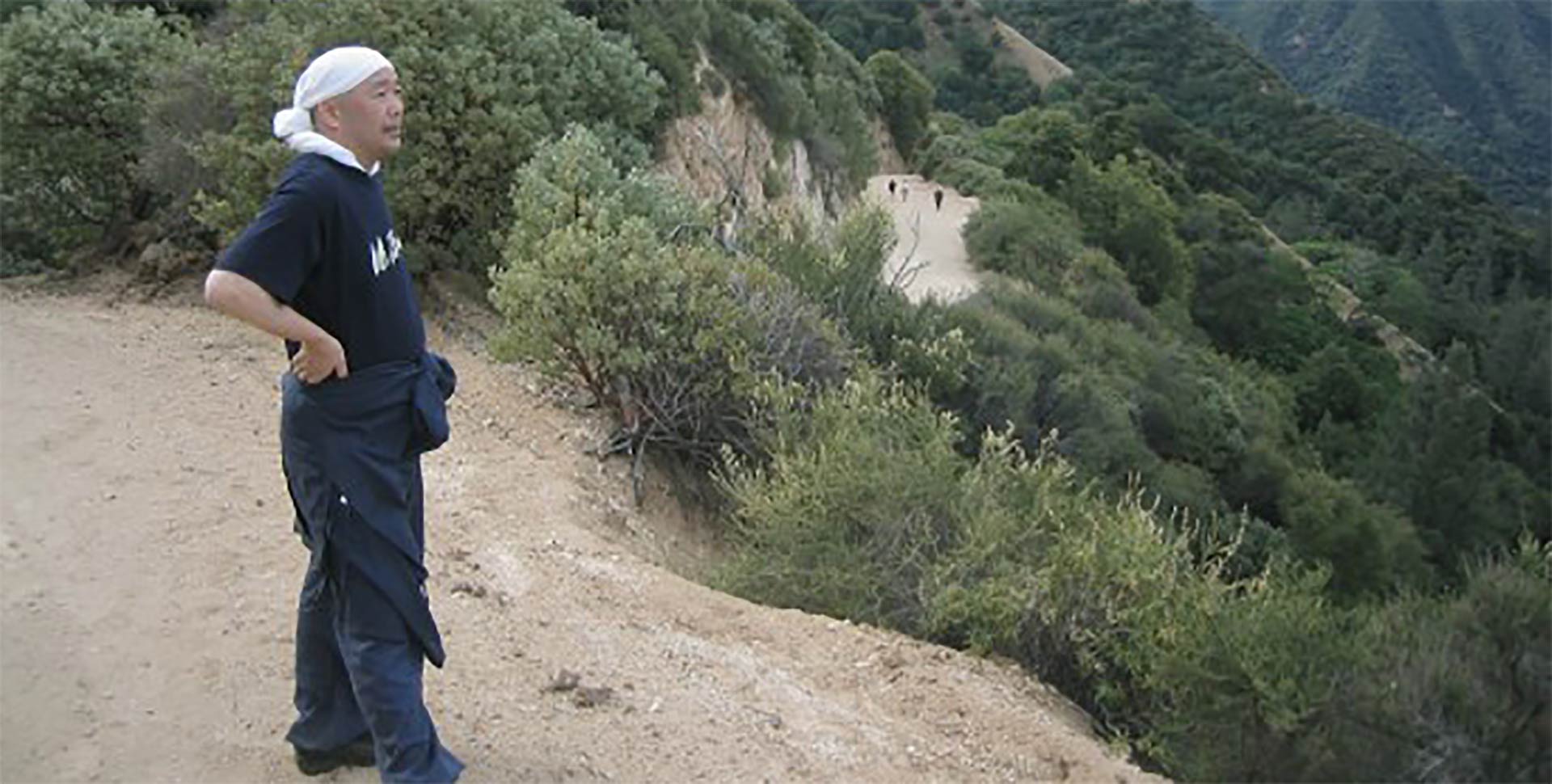I’ve talked about the origins of matcha and its deep connections with zen buddhism on this site before, but I thought I might share a personal story.
When I was 19 years old I stumbled, quite literally, into the Mt. Baldy Zen Center, a working zen monastery in the San Gabriel mountains, east of Los Angeles. I was hiking around Mt. Baldy and spotted some sparse-looking small buildings, and decided to go check them out. Inside were a bunch of bald people in black robes cooking. They were incredibly nice to me, and invited me to lunch. It was a simple lunch of brown rice, miso soup, and pickled vegetables, none of which I’d ever had before (I grew up in rural northeaster PA, and no one ever served brown rice, miso, or pickled vegetables). It was an extraordinary day on many levels, and it’s fair to say that it led to a life-long involvement and fascination with Japan, the Japanese language, Japanese food, and zen buddhism, including a 16-year stay in Japan.
I was deeply interested in the lives of the monks; why did they elect to sit there for a few hours a day in zazen (sitting meditation), shave their heads, wear black robes, and cook the way they cooked? What led them there? (A dozen years later, Leonard Cohen began practicing zen there, which really put Mt. Baldy on the map.)
One of the monks, an exceedingly kind New Zealander named John, would patiently put up with my incessant questioning over a bowl of very strange tea, a viscous and VERY bitter brew he whipped with a weird-looking bamboo whisk. He called it “matcha.” He was in retrospect using very inexpensive, very bitter matcha, but I couldn’t know that at the time, and it couldn’t have mattered less; what mattered was sitting with him in a tiny room and absorbing his remarkable energy and knowledge about zen.
Monks in 12th-century (and onward) Japan did something very similar. They prepared bowls of matcha, as both metaphors for mindfulness in preparation and body movements and to simply enjoy one another’s company over tea in the simplest environment imaginable: a tiny, unadorned hut made just for enjoying the simplicity of a cup of well-made tea.
Matcha was also used by monks as a meditation aid: it was much easier to stay awake during meditation after a bowl of matcha.
The simplicity of monks preparing tea for one another caught the attention of Japan’s aristocracy, many of whom took their social cues from Buddhists (zen monks had a great deal of cachet at the time). The upper classes rapidly took to the art of preparing a beautiful bowl of matcha, but the movements in making the tea gradually became more stylized and ornate, which served to distinguish them as cultured, sophisticated — in stark contrast to the people of the lower strata of the caste system, who, presumably, slurped down their tea in far less-polished ways. The tea ceremony was born from this distinction.
There is a lovely phrase in Japanese called shoshin: “beginner’s mind.” It refers to the zen practice of letting the mind rediscover a child’s sense of wonder about how the world works. It’s an open mind that includes both doubt and possibility, to consciously choose to see both everyday and uncommon things and thoughts as new and fresh. It is to be cultivated in all aspects of life, from routine tasks like making breakfast or putting gas in your car to more complex activities like raising a child or nurturing a business. Beginner’s mind is the essence of what John and most zen monks throughout history were trying to cultivate.
I try to practice beginner’s mind with every bowl of matcha. There’s always something new to notice. Sips of matcha can trigger all kinds of strange and long-forgotten memories and experiences, all of which float by like a fragmented movie playing in the background. But the joy and simplicity of just noticing its color, texture, taste, and very long finish is such a pleasure, such a welcome and delicious pause from the demands of contemporary life here at the end of 2014.
Shuryu Suzuki wrote beautifully on this subject in his classic, Zen Mind, Beginner’s Mind (Weatherhill, 1970). HIghly recommended reading for anyone even remotely interested.
(The monk in the photo above is the great teacher, painter, chef, and all-around amazing human being Ninsho Kakinuma. I took the photo on a walk with him several years ago at the Tassajara Zen Mountain Center)
